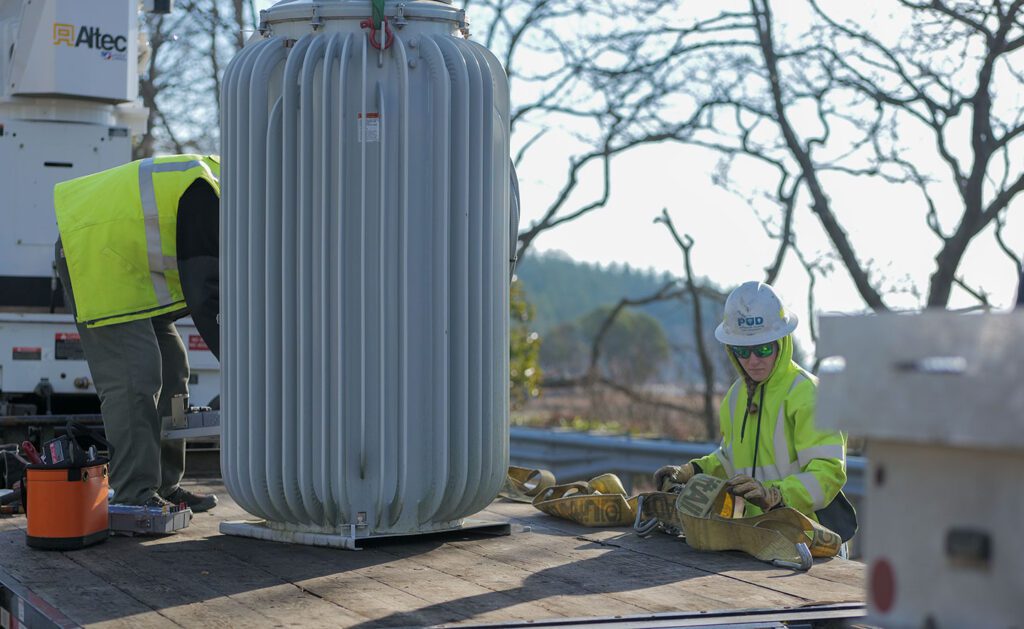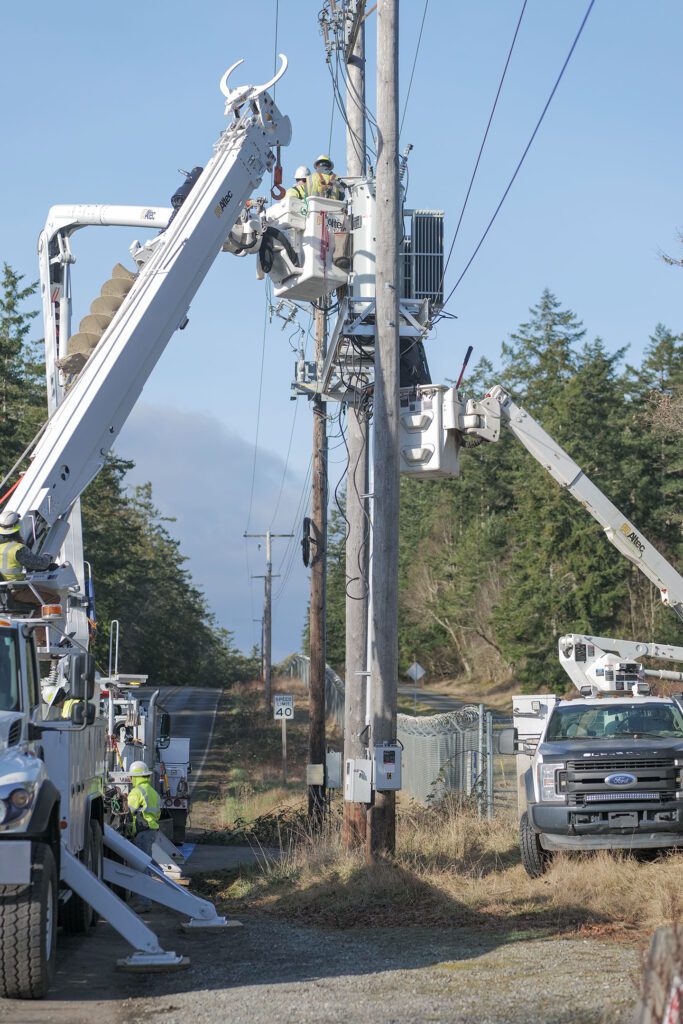The Case of the Vanishing Voltage
While most PUD employees enjoyed the day off, Line Superintendent, Michael Smith, and members of his crew spent MLK Day driving around Marrowstone investigating a phantom blip.
Multiple reports had come in that power on the island was flickering. Not unusual during storms, but the sky was clear, and the wind wasn’t blowing. Smith’s crew looked for branches on the line regardless. Sometimes the freeze thaw cycle of sunny winter days can lead to a falling tree, or a damaged limb dropping on a nice day. No luck. The lines were clear.
There was another clue, though. The timing of the flicker. Instead of the clustered power blinks that might be experienced when a branch falls on the line, the team noticed that the MLK Day blips happened on a schedule, once per hour. Just enough to send the PUD an outage alert and to reset clocks in customers’ homes. Whatever was going on, it appeared to be coming from inside the wires.
Keeping the lights on for customers on Marrowstone can be challenging. Besides all the trees, the island is the literal end of the end-of-the-line for  PUD service. By the time PUD power makes its way down Flagler Rd and out to customers at the very north end, it can get a little tired. The more accurate way to describe tired power is low voltage.
PUD service. By the time PUD power makes its way down Flagler Rd and out to customers at the very north end, it can get a little tired. The more accurate way to describe tired power is low voltage.
Voltage is often compared to pressure. Too much pressure or voltage will cause electronics to burn or break. Too little voltage will cause lights to flicker or dim, or devices to shut off unexpectedly.
New AMI meter and substation SCADA data, which acts as the utility’s nervous system, allow PUD staff a near real time voltage view on the line. And sure enough, voltages were too low on the north end of Marrowstone. But low voltage alone didn’t explain the clockwork nature of the blip.
Back in the office on Tuesday, Smith discussed the issue with the Substation team. After reviewing the system logs, they realized the problem came from the very device that was used to improve the voltage on the island, the voltage regulator.
Regulators quietly work 24/7/365 ensuring the voltage customers receive stays within a safe, usable range. One the three regulators (one per phase  on the 3-phase lines supplying the island) had failed. The blip was caused by the device’s control system attempting to manually reset once per hour.
on the 3-phase lines supplying the island) had failed. The blip was caused by the device’s control system attempting to manually reset once per hour.
The solution? Replace the regulator. Luckily, there was a spare in stock.
Replacing the regulator required a 3-hour midday outage to the entire island. The substation and line crews collaborated to get it done. Just in time for dinner, power was restored, voltages improved, and the case was closed.
